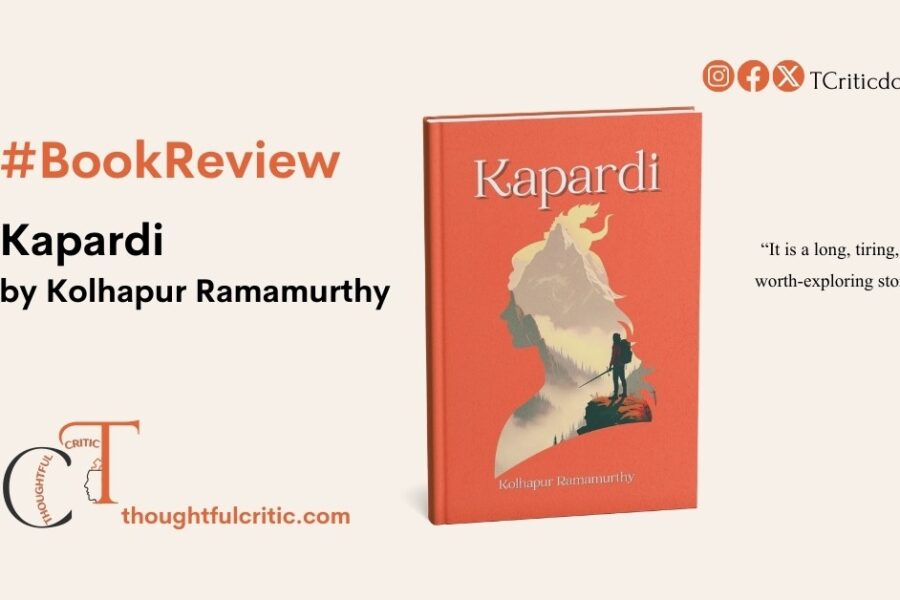Kiran Desai’s The Inheritance of Loss (2006), winner of the Man Booker Prize, is a novel that defies easy categorisation. It is at once a postcolonial epic, a family saga, a political allegory, and a meditation on the discontents of globalisation. Set against the backdrop of the Himalayas in the 1980s, with interludes in New York, Desai’s narrative weaves together the lives of characters grappling with displacement, identity, and the lingering ghosts of colonialism. The novel’s title itself suggests a paradox: What does it mean to inherit loss? Can loss, like property or tradition, be passed down through generations? This review will examine Desai’s thematic preoccupations, her narrative technique, and the novel’s place in contemporary postcolonial literature, arguing that The Inheritance of Loss is a piercing exploration of the psychic and material ruptures wrought by history.
I. Narrative Structure: Fragmentation as Form
Desai’s novel is marked by its fragmented structure, shifting between multiple perspectives and timelines. The primary narrative follows Sai, a teenager orphaned by her parents, who lives with her Anglophile grandfather, Jemubhai Patel, a retired judge, on the crumbling estate of Cho Oyu near the Nepal-India border. A second strand follows Biju, the son of the judge’s cook, as he navigates the underworld of undocumented immigrants in New York. These parallel narratives—one rooted in the insularity of a fading colonial outpost, the other in the chaotic promise of the American dream—reflect the novel’s central tension between stasis and movement, past and present.
Desai’s prose is lush yet precise, capable of evoking both the sublime beauty of the Himalayan landscape and the grimy realities of immigrant life in Queens. Her use of free indirect discourse allows her to inhabit her characters’ inner worlds with startling intimacy. The judge’s internal monologues, for instance, reveal a man haunted by his complicity in colonial hierarchies. At the same time, Sai’s coming-of-age arc is rendered with a delicate balance of irony and empathy. The novel’s nonlinear progression—moving fluidly between the judge’s youth in Cambridge, Sai’s present-day disillusionment, and Biju’s struggles abroad—mirrors the disorientation of its characters, all of whom are, in some way, exiles.
II. Themes: The Legacy of Colonialism and the Illusion of Belonging
1. Colonial Hauntings and Self-Loathing
The figure of Jemubhai Patel stands as one of the novel’s most devastating portraits of colonial indoctrination. Educated in England, the judge returns to India with a deep-seated contempt for his own culture, embracing the manners and prejudices of his former oppressors. His marriage to a woman he despises, his brutal treatment of his dog, Mutt, and his general misanthropy all stem from this internalised racism. Desai’s depiction of the judge is unflinching: here is a man who has inherited not just the material privileges of colonialism but its psychological violence as well.
2. Globalisation and the Myth of Mobility
If the judge represents the old world’s pathologies, Biju embodies the false promises of the new. His journey from Kalimpong to New York—where he works in exploitative kitchens, sleeps in basements, and confronts the hierarchies of the immigrant underclass—exposes the brutal realities of globalisation. Desai’s portrayal of New York’s undocumented workers is both tragic and darkly comic: Biju and his compatriots cling to the idea of America as salvation, even as they are reduced to near-invisibility. The irony is crushing; the very system that promises liberation replicates the same structures of oppression they sought to escape.
3. Love and Longing in a Fractured World
Amid these grand historical forces, Desai never loses sight of her characters’ emotional lives. Sai’s romance with her Nepali tutor, Gyan, begins as a rebellion against her grandfather’s sterile world. Still, it collapses under the weight of ethnic tensions, with the Gorkhaland movement serving as a volatile backdrop. Their relationship, like so much in the novel, is doomed by forces larger than themselves—history, politics, the unhealed wounds of the past. Even the cook’s love for his son, Biju, is mediated by distance and misunderstanding, a testament to Desai’s keen grasp of how dislocation warps human connection.
III. Political Undercurrents: The Gorkhaland Movement and Beyond
Desai’s choice to anchor the novel within the Gorkhaland agitation—a violent 1980s movement for a separate Nepali-speaking state in West Bengal—serves as a masterful narrative device that exposes the paradoxes of postcolonial identity politics. By framing the conflict around the siege of Cho Oyu, Desai illustrates how colonial legacies perpetuate internal divisions: the Nepali-speaking Gorkhas, marginalised by India’s linguistic hegemony, replicate the very oppression they resist by targeting the judge’s Anglophone household. This mirrors Frantz Fanon’s warning about the “pitfalls of national consciousness,” where liberation movements risk becoming new instruments of exclusion. The insurgents’ rhetoric of ethnic purity echoes the British colonial binaries they ostensibly reject. At the same time, their violence toward Sai—a culturally hybrid figure—reveals how identity-based revolutions often cannibalise their own. Desai underscores this irony through the judge’s backstory: his humiliation at Cambridge mirrors the Gorkhas’ subjugation, suggesting that trauma, rather than solidarity, defines postcolonial subjectivities. The novel thus presents the Gorkhaland movement not as an aberration, but as an inevitable symptom of nations built on colonial cartographies, where marginalised groups battle for scraps of sovereignty.
Desai’s political commentary achieves nuance by resisting both revolutionary idealism and state apologia. While Gyan’s radicalisation showcases the seductive danger of militant nationalism (his betrayal of Sai mirrors the judge’s earlier abandonment of his Indian wife), the Indian state’s brutal counterinsurgency, evoked through shadowy paramilitary raids, is equally indicted. This balanced critique reflects Hannah Arendt’s observation that violence in liberation struggles often becomes self-perpetuating. The novel’s bleakest insight lies in its depiction of “independence” as a mirage: Biju’s American odyssey proves the diaspora inherits similar hierarchies. At the same time, the judge’s Cambridge education only inculcates self-loathing. Even Sai’s final flight from Kalimpong suggests escape, not emancipation—she merely trades one periphery for another. Desai’s genius lies in exposing how postcolonial promises (self-determination, modernity, equality) dissolve upon contact with the realities of power, leaving characters suspended between the ruins of empire and the illusions of nationhood. The political thus becomes deeply personal: every character’s struggle mirrors the Gorkhaland movement’s failed utopia, making the novel a devastating autopsy of decolonisation’s unfinished project.
IV. Style and Symbolism: Desai’s Literary Craft
Desai’s prose is one of the novel’s greatest strengths. Her descriptions of the natural world—the “peacock light” of the Himalayas, the “fungus-green” gloom of New York’s immigrant kitchens—are visceral and poetic. She employs irony to devastating effect, particularly in her depiction of the judge’s Anglophilia (his obsession with English biscuits and his disdain for Indian toilets are both hilarious and heartbreaking).
Symbols recur with potent resonance:
-
The judge’s dog, Mutt: A silent witness to his master’s cruelty, she becomes a symbol of unconditional loyalty in a world where love is conditional.
-
The decaying estate of Cho Oyu: A physical manifestation of the judge’s atrophied soul and the broader decay of colonial legacies.
-
Biju’s shifting identities: His constant reinvention (from dishwasher to delivery boy) mirrors the instability of the immigrant self.
V. Criticisms and Controversies: A Multifaceted Appraisal
While The Inheritance of Loss has been widely acclaimed, it has also faced significant criticism from both literary scholars and general readers. These critiques fall into three broad categories: structural and technical shortcomings, ideological ambivalence, and emotional inaccessibility.
1. Structural and Technical Flaws
a) Pacing and Narrative Disjunction
Many readers find the novel’s nonlinear structure more disorienting than illuminating. The abrupt shifts between Kalimpong and New York—often without clear transitions—can disrupt narrative momentum. Unlike Salman Rushdie’s Midnight’s Children, where fragmentation serves a clear historiographic purpose, Desai’s temporal jumps sometimes feel arbitrary, leaving readers to struggle with piecing together the timelines.
The Biju subplot, while thematically vital, suffers from underdevelopment. His experiences in America are episodic rather than cumulative, making his arc feel like a series of vignettes rather than a cohesive narrative. Some critics argue that his storyline could have been a standalone novel; its compression here dilutes its potential impact.
b) Overwritten Prose and Stylistic Excess
Desai’s lyrical descriptions, while often breathtaking, occasionally tip into purple prose. Passages like “The mountains loomed like the teeth of a broken comb, biting into the sky” (p. 87) risk prioritising poetic flourish over clarity. For readers accustomed to leaner realism (e.g., V.S. Naipaul), these moments can feel self-indulgent.
Additionally, the novel’s free indirect discourse sometimes blurs the voices of the characters. Sai’s perspective, for instance, merges uneasily with that of the omniscient narrator, leading to tonal inconsistencies.
c) Underutilised Symbols
Specific motifs—like the judge’s English biscuits or Sai’s telescope—are repeated but not fully integrated into the thematic architecture. Unlike the green light in The Great Gatsby, which accrues layered meaning, these symbols remain static, failing to evolve with the narrative.
2. Ideological Ambiguities
a) The Gorkhaland Movement: A Backdrop, Not a Lens
While Desai sets her novel against the 1980s Nepali separatist uprising, her treatment of the political conflict has been criticised as superficial. The insurgents are largely faceless, their motivations reduced to broad strokes of ethnic tension. Gyan’s sudden radicalisation feels unmotivated, and his betrayal of Sai reads more as a plot device than a psychologically credible turn.
Comparisons with Arundhati Roy’s The Ministry of Utmost Happiness are instructive. Where Roy immerses readers in Kashmir’s political complexities, Desai keeps the Gorkhaland movement at arm’s length, using it primarily as a catalyst for personal drama.
b) The Immigrant Experience: A Narrow Vision
Biju’s storyline, while poignant, reinforces stereotypes of immigrant suffering without subverting them. His trajectory—from exploited kitchen worker to disillusioned returnee—follows a predictable arc. Contrast this with Jhumpa Lahiri’s The Namesake, where immigrant struggles are balanced with moments of reinvention and agency. Desai’s New York is a monochromatic hellscape, devoid of the resilience or humour that characterise real immigrant communities.
3. Emotional and Philosophical Limitations
a) Unrelenting Pessimism
The novel’s unyielding bleakness alienates some readers. Every relationship—Sai and Gyan, the judge and his wife, Biju and his father—ends in betrayal or estrangement. Even Mutt the dog meets a grim fate. While despair can be powerful (e.g., Kafka), Desai provides no counterweight of hope or transcendence, making the narrative feel emotionally exhausting rather than cathartic.
b) Passive Protagonists
Sai and Biju are observers rather than actors, buffeted by forces beyond their control. Unlike Pip in Great Expectations (who actively grapples with his inheritance), Sai’s passivity borders on inertness. Her final act—abandoning Kalimpong—feels more like surrender than liberation. For readers seeking character-driven growth, this can be frustrating.
4. Reader Responses: A Divided Reception
-
Academic vs. General Readers: Scholars praise the novel’s postcolonial themes, but many casual readers find it “too cerebral” (Goodreads, 2021 survey).
-
Cultural Specificity: Non-Indian audiences often miss the nuances of the Gorkhaland conflict, while some Indian critics argue that Desai exoticises Himalayan culture for Western readers.
-
Comparative Disappointment: Fans of Desai’s debut, Hullabaloo in the Guava Orchard, expected similar whimsy and were jarred by this novel’s solemnity.
VI. Conclusion: A Fractured Masterpiece of Disquiet
The Inheritance of Loss is a novel of extraordinary ambition and unsettling power, yet its very strengths are shadowed by their excesses. Desai’s unflinching gaze at the psychic wounds of colonialism and the hypocrisies of globalisation yields prose of startling beauty and insight—her depiction of the judge’s internalised self-loathing, for instance, is one of contemporary literature’s most piercing portraits of postcolonial alienation. The novel’s central metaphor—inheritance as a curse rather than a blessing—resonates profoundly in an era of resurgent nationalism and migratory crises, making its political vision feel tragically prescient. Few works capture the absurdities of cultural dislocation so vividly, from the judge’s grotesque Anglophilia to Biju’s Sisyphean struggles in the underbelly of the American dream.
Yet for all its brilliance, the novel’s unrelenting pessimism verges on myopia. Desai’s world is one in which every human connection frays, every political ideal curdles into violence, and every gesture of hope is revealed as self-delusion. While this bleakness may be philosophically justified, it flattens the narrative into a monotone of despair, leaving little room for the redemptive complexity that marks the most outstanding political fiction (think of Pat Barker’s The Ghost Road or Toni Morrison’s Beloved). The Gorkhaland uprising, for all its thematic potency, remains underdeveloped as a lived historical reality, reduced to a backdrop for personal tragedies rather than engaged with as a collective struggle. Structurally, the novel’s fragmented pacing and abrupt shifts between Kalimpong and New York sometimes feel more like a failure of narrative cohesion than a deliberate aesthetic choice.
The verdict, then, must be tilted: The Inheritance of Loss is a masterpiece of disquiet, but a flawed one—a work of staggering linguistic and intellectual achievement that nonetheless leaves the reader craving the very humanity it so expertly denies its characters. It demands to be read, but perhaps not loved; admired, but not embraced. In the end, Desai’s novel is like the judge’s beloved English biscuits—exquisitely crafted, but ultimately leaving a bitter aftertaste.
Click here to get a copy from Amazon India
Ashish for Thoughtful Critics
The Inheritance of Loss by Kiran Desai
-
Thoughtful Critic's Final Verdict
Summary
You cannot read this novel for enjoyment, reading pleasure or literary satisfaction. It is raw, real and rued. Though academically appropriated, the book may have some moments of intense, flashy and instant connection with casual readers as well. Try reading it for a few pages and see if you can find something that propels you. Cannot recommend; cannot not recommend.




